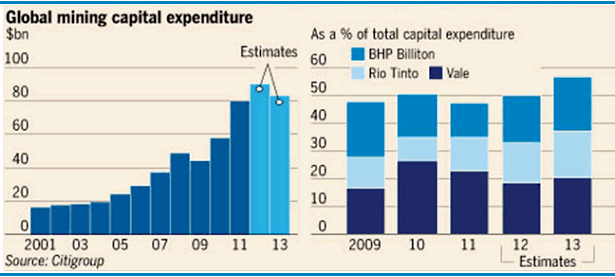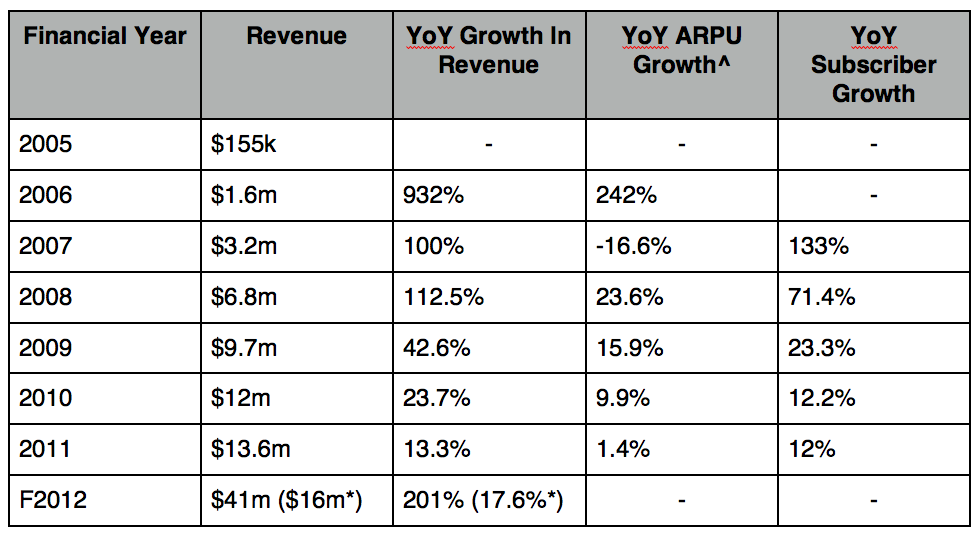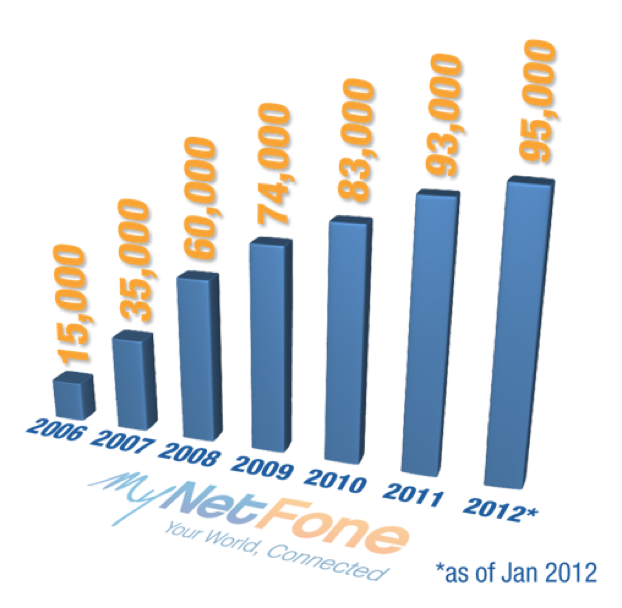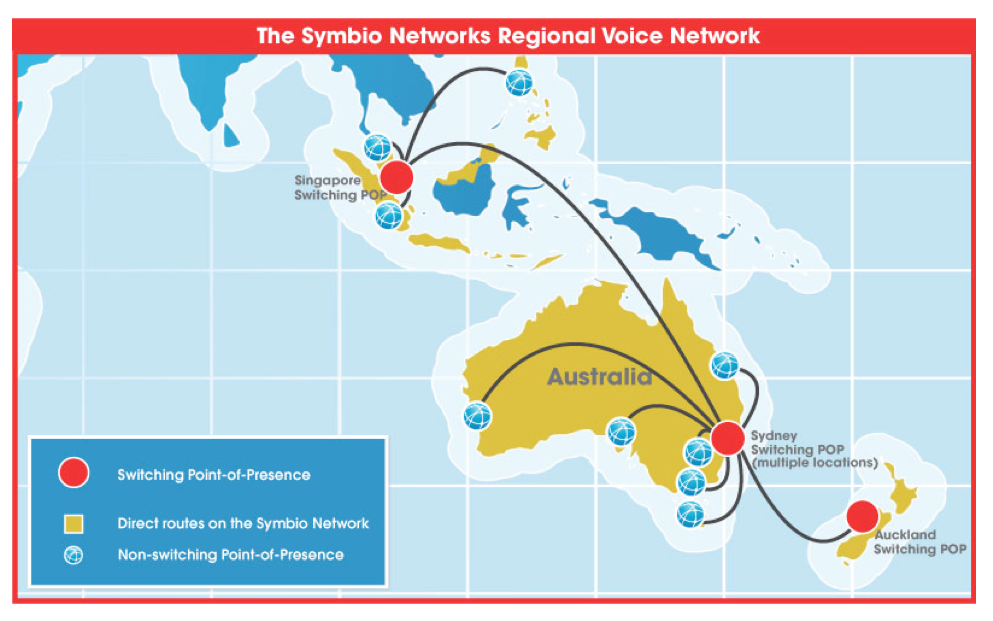Insightful Insights
-
Are Chinese construction lay-offs a bad omen for Iron Ore prices?
Roger Montgomery
July 9, 2012
Sani Group, China’s biggest maker of construction machines has announced a cut to its workforce.
Given lay-offs did not occur in the down cycles of 2005 and 2008, this is a clear sign some pain is being experienced in China’s industrial heartland.
Sany’s 60,000 staff produces concrete machinery, excavators, cranes, pile drivers and road machinery. Its revenue exceeds RMB80 billion or US$12.5 billion.
With the tripling in demand for machinery in China since 2001, it appears Sany has recently been selling machines on generous credit terms. As a result the machinery maker saw its net receivables double over 2011.
The slowdown in Chinese construction activity is not a good omen for the iron-ore price, currently US$135/tonne. China’s demand accounts for 63% of iron-ore’s global seaborne trade.
by Roger Montgomery Posted in Energy / Resources, Insightful Insights.
-

MEDIA
Will Fairfax Media’s restructure provide real profitable change?
Roger Montgomery
June 18, 2012
Fairfax Media’s restructure announcement has been welcomed by the market, but what prospects does their revised business model have for future profitability? Roger Montgomery provides his Value.able insights to ABC1’s Ticky Fullerton in this edition of ‘The Business’ broadcast on 18 June 2012. Watch here.
by Roger Montgomery Posted in Insightful Insights, Takeovers, TV Appearances, Value.able.
-
..and so it goes
Roger Montgomery
June 5, 2012
 As you already know, despite the enthusiasm for mining service companies back in April, we sold our holdings substantially and in some cases completely. We have not shared our peers’ – some of whom include themselves in the ‘value investing’ camp – enthusiasm for BHP. Our reasoning for this is our thesis regarding iron ore prices, which is unchanged from late last year.
As you already know, despite the enthusiasm for mining service companies back in April, we sold our holdings substantially and in some cases completely. We have not shared our peers’ – some of whom include themselves in the ‘value investing’ camp – enthusiasm for BHP. Our reasoning for this is our thesis regarding iron ore prices, which is unchanged from late last year.Back then it was simply the classic investment response to higher prices. Iron Ore prices between 1985 and and 2004 have traded between $11 and $15 and in real terms since the 1920’s prices have traded between $30 and $45. In 2004 the price of iron ore started rallying and hit $187 in 2007.
Putting aside the fact that iron ore experts now ‘guess’ $140 is the new medium term price and $100 the long term price, the rally in price from 2004 to now has produced a huge investment boom and turned millionaires into billionaires as they revalue their reserves (or other bulls value them for them).
It follows that the investment boom will now produce additional supply. The impact of this additional supply cannot be anything but falling prices.
Well, that was our thesis. And then China began slowing down. We wrote about that too
If you have been a regular to the Insights Blog, you will be familiar with some of our recent thoughts on iron ore here:
April 3) http://rogermontgomery.com/mining-services-a-crowded-trade/
April 18) http://rogermontgomery.com/building-heaps-piles-at-bhp/
APril 11) http://rogermontgomery.com/will-china-demand-iron-or/
And you can watch this video I published here on December 8 last year:
Since July last year BHP is down 30% and RIO down 36%. Since April and early May they are down 15% and 20% respectively. Many investors are now thinking they are cheap. But there is the possibility of a classic Value Trap.
Forecast valuations may yet decline further, even if share prices bounce. Here’s our thoughts…
PORTFOLIO POINT: BHP and Rio’s review of capex programs represents a stark turnaround from comments made just two months ago, and it’s a worrying sign for the rest of the sector.
BHP is trading at three-year lows, Fortescue is down 17% from recent highs and Rio is visiting lows last seen in 2008. If you own shares in any of these companies, only Telstra would have saved your portfolio from a shellacking.
The big caps, however, are not the only stocks that have suffered. Over recent years, it is likely that you would have observed my interest in mining services. That interest was a product of the presence of value for money.
This is a sector I know well and have covered numerous times. I have discussed and brought listed businesses – including Decmil Group (DCG), Forge Group (FGE) and Matrix Composites & Engineering (MCE) – and IPOs – GR Engineering (GNG) and Maca (MLD) – to your attention.
This was mostly at a time when there was little market interest, despite their apparent growth profiles, quality aggregated balance sheets and (now with the exception of MCE) management.
Today, however, that story is very different and I find myself erring on the side of caution when it comes to ‘picks and shovels’.
Each week, a stronger case is building that a key growth engine for capex spending by our miners is slowing – that is, commodity prices are falling.
Take one commodity I have discussed recently: iron ore.
In 2010-11, world iron ore production grew 8.1% (or 227mt) to 2.80bt. Assuming similar growth levels in 2011-12, iron ore production will grow to 3.04bt, an increase of about 237mt. (In a classic supply response, BHP production is forecast to grow by 20%, Rio by 30% and FMG by 25%.)
And assuming China consumes 60% of global production again (highly optimistic), its demand would increase by 136.2mt. However, moderating growth means current estimates for China’s iron ore requirements are half this level. With few other countries growing or competing heavily with China, who will pick up that supply overhang in a low-growth environment?
By 2015, two entire Pilbara regions (700mt) in supply terms are estimated to come onto the market. It’s a far stretch to expect China to absorb 420mt (60%) of that.
The impact, I expect, is pressure on iron ore prices.
Many other commodities are looking like they are set to suffer a similar fate. Record prices over a decade have created an investment boom that is climaxing at a time when global demand is losing interest. And you need two to tango. When soaring supply meets softening demand, lower prices follow.
So what are the implications? Put simply, for those who dig stuff out of the ground and export it, margins and cash flow will be squeezed (a situation I have been monitoring closely and alerting readers to for at least six months). It’s why I haven’t bought BHP.
In previous periods, a revenue squeeze has been a precursor to capex plan deferrals or delays lasting years. Barely economical projects are shelved as miners focus instead on financing core (capital-intensive) operations, rather than aggressive growth targets.
Indeed, the 1990s was a very different period for miners, and those who serviced the mining sector barely made it onto investment radars. Companies struggled to cover their cost of capital and total annual capex was less than $20 billion for the entire mining industry.
Today, many miners are generating returns on equity in excess of 30% (‘super profits’?) and capex runs in excess of $60 billion per annum. Are such numbers maintainable forever? No. And if it can’t go on forever, it must stop.
Just a few days ago, BHP Billiton and Rio Tinto announced that they are re-evaluating their capital expenditure programs. These comments are in stark contrast to their latest financial reports and presentations made just two months ago.
In those reports, confidence was effervescent and the deployment of $40 billion in a global cash capex spree was on the cards. Today, as China’s growth rate slows and some investors lobby for a greater focus on cost control and returning funds to shareholders, tens of billions of dollars of an extensive development project pipeline is under review.
When the two leading businesses that account for about 35% of total industry investment start to make noise, it’s time to sit up and pay attention.
We are bound to see many other miners follow suit and the chorus is growing louder by the day. Citigroup conducted a survey in April and found that 50% of all miners were considering lowering their investment budgets.
That compares to less than 20% in January.
Figure 1. A picture tells a thousand words
At the start of the financial year, capital expenditure was forecast to rise 34%, with an increase of 18% in 2013.
The forecast today is for a rise of only 13% this year and a fall in 2013. This represents a material deterioration in market conditions in a very short period of time. All of this weighs on the ‘bright prospects’ that once surrounded those companies which service the miners.
This brings us back to Decmil, Forge and investing. I bought both of these businesses in the Montgomery [Private] Fund near its inception.
Forge is a business that has a significant exposure to second-tier miners, especially those expanding their iron ore operations. Decmil, on the other hand, has around 43% of its business exposed to resources and the balance to oil & gas.
While plenty of work is still forecast to be in the pipeline for mining services companies, there are also plenty of companies trying to win it.
If we are at the peak of the current capex cycle, this is as good as it gets in terms of margins for mining services businesses and also workloads.
With that in mind, and coupled with prices increasing to levels I deem attractive for what are businesses with high operating leverage, I have decided to read the writing on the wall and position our investments in a more conservative manner. I sold our Forge holding some weeks ago and also scaled back our holding of Decmil.
It is possible I am early to leave the party – the band is still playing. But the mining industry is bracing for a pullback in investment spending, as the biggest companies reassess their capital expenditure plans amid escalating costs and an uncertain growth outlook. I anticipate that analysts will revise their earnings forecasts lower for 2013 and beyond.
The valuations I look at in Skaffold will also fall, I expect, as those earnings revisions are fed through. Of course, I could also be completely wrong but I reckon the big mining companies’ historical predilections for over-paying for acquisitions (another reason I have been loath to invest) may just revisit them.
The combination of a contracting market and high operating leverage means I simply prefer the safety of cash. Better to be confident of a good return than hopeful of a great one.
This article was first published on May 16, 2012
by Roger Montgomery Posted in Energy / Resources, Insightful Insights, Intrinsic Value.
-
What is HFT and Algo trading?
Roger Montgomery
May 21, 2012
 Facebook floated last week and amazingly it has been holding above its IPO price of $38 per share. I say amazingly because I reckon its value to be substantially lower. I will publish my completed calculations in the near future
Facebook floated last week and amazingly it has been holding above its IPO price of $38 per share. I say amazingly because I reckon its value to be substantially lower. I will publish my completed calculations in the near futureHere’s a taster: “For a purchaser of Facebook shares today and wanting 15 percent per year over the next five years (doubling your money), Facebook’s market capitalization has to double to $200 billion without any additional shares being issued (options to be exercised will put paid to any fairy tale notions about that). Google is valued by the market today at $200 billion. Both businesses are similar in terms of margins etc so arguably Facebook needs to increase its sales tenfold in the next five years to achieve the same valuation as Google today. But keep in mind, Google has about $40 billion of cash in its accounts. Facebook has nothing like that.”
For now I thought the trading in Facebook on its first day was a useful entrée to the world of High Frequency and Algorithmic trading and I also thought that comic Andy Borowitz’s tongue-in-cheek look at Facebook provided a welcome break from the doom and gloom pervading investment markets.
From: http://www.borowitzreport.com/
MENLO PARK, CA (The Borowitz Report) – On the eve of Facebook’s IPO, Founder and CEO Mark Zuckerberg published the following letter to potential investors:
Dear Potential Investor:
For years, you’ve wasted your time on Facebook. Now here’s your chance to waste your money on it, too.
Tomorrow is Facebook’s IPO, and I know what some of you are thinking. How will Facebook be any different from the dot-com bubble of the early 2000’s?
For one thing, those bad dot-com stocks were all speculation and hype, and weren’t based on real businesses. Facebook, on the other hand, is based on a solid foundation of angry birds and imaginary sheep.
Second, Facebook is the most successful social network in the world, enabling millions to share information of no interest with people they barely know.
Third, every time someone clicks on a Facebook ad, Facebook makes money. And while no one has ever done this on purpose, millions have done it by mistake while drunk. We totally stole this idea from iTunes.
Finally, if you invest in Facebook, you’ll be far from alone. As a result of using Facebook for the past few years, over 900 million people in the world have suffered mild to moderate brain damage, impairing their ability to make reasoned judgments. These will be your fellow Facebook investors.
With your help, if all goes as planned tomorrow, Facebook’s IPO will net $100 billion. To put that number in context, it would take JP Morgan four or five trades to lose that much money.
One last thing: what will, I, Mark Zuckerberg, do with the $18 billion I’m expected to earn from Facebook’s IPO? Well, I’m considering buying Greece, but that would still leave me with $18 billion. LOL.
Friend me,
Mark
Following that lighthearted distraction, if you are interested in how High Frequency Trading and [some examples] of Algorithmic (Algo) Trading looks in the real world, watch this:
As the following chart reveals (you will have to suspend reality and imagine that the future always looks exactly the same as the past) some analysts think Facebook’s growth will mimic that of other high profile social networks. No doubt the underwriters of Facebook will hope they’re wrong.
Either way it will be more than a little interesting to watch. Did you buy shares in Facebook? If not, why not? And if you did, what were the reasons?
Posted by Roger Montgomery, Value.ableauthor, SkaffoldChairman and Fund Manager, 21 May 2012.
by Roger Montgomery Posted in Insightful Insights, Value.able.
-
What’s the big Idea?
Roger Montgomery
May 21, 2012
Matthew was so disappointed about the April takeover offer for a company he owned, that he wrote a letter to his rep – the CEO
More of us should be doing likewise, remembering the words of Richard Puntillo; “in theory, publicly traded corporations have shareholders as their kings, boards of directors as thesword–wielding knights who protect the shareholders and managers as the vassals who carry out orders. In practice, in the past decade, managers have become kings who lavish gold upon themselves, boards of directors have become fawning courtiers who take coin in return for an uncritical yes-man function and shareholders have become peasants whose property may be seized at management’s whim.”
Has a company you owned shares in been taken over and left you disappointed rather than elated? Its simplistic and a sign of immaturity as an investor to celebrate a takeover when the price paid does not justify the prize. Its far too easy for investors to do the ‘Wall Street walk’ when a bid is received. Matthew’s actions serve as a reminder that their are issues beyond the immediate return that must also be considered.
Hi Roger and team,
I sent the following letter to the CEO of a company today that I am a shareholder in called IDEAS International. They are a small company but very successful and operate in an area that is experiencing huge growth. They are little known, very thinly traded and not appropriate for most investors. Perfect for me!
IDEAS International was formed in 1981 and listed on the ASX in 2001. The IDEAS business is essentially one of analysing computer resource usage. This is important for companies who operate servers because this information allows these companies to increase efficiency and get value for money from their IT purchases. In a commodity like business (i.e. cloud servers) companies that can assist you to squeeze out another 1% in efficiency or when buying $20m of hardware to buy the correct servers for the job, paying a small fee to a company like IDEAS is a no-brainer. They provide independent advice based on real-world scenarios. They collect this information from the other part of their business which is in providing independent monitoring and analysis services to the same companies. Cloud computing is a huge growth area at the moment and it will get bigger. IDEAS is only just making a dent in this business and the demand for their services will grow as the cloud computing business is increasingly commoditised.
On wednesday they went in to a trading halt pending the release of information regarding a control transaction. Today they released a takeover bid by a large international IT outfit called Gartner with the full support of the board. No premium to current prices has been offered, the takeover is at $1.40, the same as the trading price for the last month. The quality of this company is high, it is cheap and Gartner are getting away with robbery.
The below letter doesn’t fit the theme of the recent “Guest Posts” but I thought you might consider it anyway. I won’t be at all concerned if you don’t think it is appropriate.
Kind Regards,
Matthew Rackham
**********
IDEAS InternationalASX Code: IDE“Takeover Disappointment”
Dear Mr Bowhill,
I read with interest the takeover proposal by Gartner for IDEAS released to the ASX this morning.
I am a private investor and I will be up front and say that I am very disappointed to hear that you are recommending the proposal.
IDEAS is a fantastic business. There are very few businesses as good as IDEAS in Australia, let alone on the ASX. Not only is this a fantastic business but by what I have read it seems to be run very well by management. Overlay this on the growth in the server space which IDEAS is in and my impression is this company has many exciting years of growth ahead of it.
In comparison Gartner looks to me to be a lousy business. Significant debt, slim profit margins and poor return on assets are the lot of Gartner’s management and shareholders.
But maybe these could be forgiven if the sale price rewarded current shareholders equally to future shareholders. Sadly however, it does not. If something close to recent performance continues I expect IDEAS to be worth in excess of $3 per share and maybe up to $4.20 in four years time. If the AUD drops this figure will be higher. Looking at your financial statements IDEAS will have the capacity to pay much larger dividends in the very near future as well. Net of cash Gartner are buying our company for $13.1 million and with earnings of $1.9 million and cash flow of $2.8 million – Gartner are making a steal. I expect Gartner will get their purchase outlay back within 4 years, and much earlier when they leverage their much larger distribution network.
I have to ask the question: Why if Gartner are so keen to use the resources of IDEAS do the management of IDEAS not license Gartner as a reseller/agent/partner ? This would ensure the value of IDEAS stays with the shareholders of IDEAS, allow IDEAS management to achieve their aspirations of making IDEAS a globally significant business and Gartner can continue on as, albeit slightly less so than before, a lousy performing business. In this scenario everyone gets the value they are entitled to.
Longstanding shareholders of IDEAS may feel that the performance of IDEAS share price has not been all that great for many years and this is a chance to “cash out” at a good price. What I would say to them is that (1) this is not the time to “cash out” given IDEAS is on the cusp of a large ramp up in use of it’s services – if they have waited this long surely they can hold on a few more years to realise the benefits of their patience and (2) higher share prices in normal circumstances result in greater liquidity in the shares so if they want to cash out they will be able to in a few years anyway. New shareholders from the GFC period have nothing to lose either way (good luck to them!).
I am very frustrated by this opportunistic offer for our company,
Kind Regards,
Matthew Rackham
by Roger Montgomery Posted in Insightful Insights, Value.able.
-
The Buffett & Munger Show 2012
Roger Montgomery
May 16, 2012
 A broker sent us a copy of these notes taken at the 2012 Berkshire Annual general meeting. The media has taken excerpts and they’ve gone viral but we like the completeness of the document we were sent. Have a read and feel free to share your thoughts.
A broker sent us a copy of these notes taken at the 2012 Berkshire Annual general meeting. The media has taken excerpts and they’ve gone viral but we like the completeness of the document we were sent. Have a read and feel free to share your thoughts.2012 Berkshire Hathaway Notes Annual Meeting Notes
Posted by Roger Montgomery, Value.able author, SkaffoldChairman and Fund Manager, 16 May 2012.
by Roger Montgomery Posted in Companies, Insightful Insights.
- 9 Comments
- save this article
- POSTED IN Companies, Insightful Insights
-
Are you being served?
Roger Montgomery
May 3, 2012
PORTFOLIO POINT: Office provider Servcorp is basking in strong earnings forecasts from analysts, but a capital raising in 2010 raises some important questions about the company.
Recently (Click here), I discussed Leighton and the quality of management’s relationship with its employees. Here I look at another company with a shareholder who holds a controlling stake, and examine its relationship with minority shareholders.
You can look at anything from a number of angles and, more often than not, reach an entirely different conclusion. Two investors, for example, presented with the same set of facts can reach polar opposite conclusions. It’s the old glass half-full versus half-empty line.
I find that having a set view and unwittingly being tied to that perspective limits one’s ability to switch fast enough when the evidence is mounting that the view might be wrong. Few are completely immune, but self-awareness is the first step to conquering any weaknesses.
The investing consequence of opening one’s mind to change is that portfolio turnover goes up. I may buy something back that I recently sold, because new evidence suggests I should, and that ‘re-purchase’ may be at a higher price. This may be seen as somewhat flaky and I agree it would be, if it were not evidence-based.
Looking at things differently, however, is necessary because it does produce fresh insights. On page 20 of Warren Buffett’s 2003 annual letter to shareholders, he wrote: “…I made a big mistake in not selling several of our larger holdings during The Great Bubble.” Shining a light – or perhaps a light with a different filter – undeniably helps our investment analysis.
With that in mind, I want to present some numbers from Servcorp’s annual reports and ask you to think about what your conclusion might be.
This service and virtual office provider has not produced growing profits since 2007.
Source: www.Skaffold.com PATENTS PENDING.
Back then, profits were $34 million, and while they grew to $39 million in 2009, they subsequently fell to $5 million in 2010 and $4 million in 2011. For the record, analysts are in aggregate forecasting profits to grow to $13 million in 2012, and $28 million and $37 million in 2013 and 2014, respectively.
So that’s one way of looking at this business and on that basis, you may be tempted to investigate the opportunity as a turnaround story. I certainly am, as any global recovery from the Euro crisis would position Servcorp well with the rollout of its floor leasing operations.
Is there another perspective?
But before I go jumping in, here’s another way to consider the information. In 2010, the full year profits plunged to $5 million, the company raised $78 million – on top of the $76 million already invested – by issuing 18 million shares. This move took shares on issue to 98 million and capital raised to $154 million. And looking at the retained earnings account for that year reveals that the balance declined by $10 million. This is something I want to pick up on.
When a company earns a profit of $5 million, as Servcorp did in 2010, retained earnings rise by this amount. Then, if dividends are paid, retained earnings goes down by the amount of the dividend. A net decline of $10 million in retained earnings after a $5 million profit suggests $15 million was paid in dividends.
One way to look at this situation is to assume that the capital raising is for growth; I will give the company the benefit of the doubt and agree. An alternative and admittedly more cynical way to look at it is to assume the capital raising might have been designed to pay for the dividend.
One response to the latter proposition and the one I am leaning towards is that the capital raising was much larger than the amount the dividend exceeded earnings by and therefore the real intention of the capital raising was, indeed, growth. In turn, one retort from a much more jaded or cynical investor could be that the capital raising was made larger to disguise the fact that a larger dividend was desired. It’s all rather circular, as you will discover in a moment.
Perhaps we might never know the thought process of the board at the time and such postulations are only speculative at best, but there are two important questions, answers to which would provide some illumination. The first would be whether the money invested does indeed lead to the growth in earnings that the analysts seem to be expecting – albeit growth that will only produce profits in 2014 that are in line with those of 2007/08. The second might be to ask whether a majority and controlling shareholder is present. Once again, we can’t prove motives, but as investors we are certainly within our rights to enquire.
In the first instance, only time will tell us whether the money is invested profitably. The cash is certainly now available to help grow the business, revenue and profits. To the credit of management, first-half 2012 profits were over $8 million. So the numbers are indeed moving in the right direction.
Regarding the latter issue of ownership, we find the managing director and CEO also owns 51% of the company. Of course, to retain control they must have participated in the capital raising during the 2010 financial year, but keep in mind it could be argued that half the dividend helped fund it.
And I always ask the following question: If a company is in need of capital, why pay a dividend? It’s a basic question and often – but not always – the answer seems to point to maintaining support for the share price, a noble (if perhaps unsustainable and diluting) goal. Directors are arguably acting in shareholder’s best interests by doing things that support the share price but it is imperative the techniques are sustainable. Ultimately the best method is a sound business.
In 2011, the company did almost the same thing as it did in 2010. While no additional equity was raised, and thus the controlling shareholder was therefore spared the requirement of writing another cheque, profits of $4 million were reported, but dividends of $16 million (51% of which went to entities associated with the CEO/MD) ensured that retained earnings fell to $59 million. The $8 million dollars (50% of the dividend) arguably further reduced the personal contribution of the majority shareholder to the capital raising.
For our fund, a return on equity now of just 7% suggests Servcorp is currently not investment grade, and its share price also appears to be expensive compared to our estimate of its intrinsic value. That would change if upgrades to guidance are provided.
While we haven’t answered the questions we posed, we have certainly raised the one we should ask management before we decide to invest. In theory the board works for the shareholders so you are within your rights to ask questions such as these of the board. For your own investing, I can only leave it to you to decide whether the cup is half-full or half-empty.
Posted by Roger Montgomery, Value.able author, SkaffoldChairman and Fund Manager, 3 May 2012.
by Roger Montgomery Posted in Insightful Insights, Skaffold.
- 25 Comments
- save this article
- POSTED IN Insightful Insights, Skaffold
-

MEDIA
Uncovering the best value stocks
Roger Montgomery
May 2, 2012
In this 2 May 2012 ASX Investor Hour presentation, Roger explains that while many investors focus solely on price, he (like Warren Buffett) selects his stocks, to buy or to sell, by comparing their current price to the value he ascribes to them. Roger discusses about his value principles and the technology he uses to filter stocks (www.skaffold.com). Watch video here and view slides here.
by Roger Montgomery Posted in Insightful Insights, Investing Education, Skaffold, TV Appearances.
-

MEDIA
What are the characteristics of Sustainable Competitive Advantage?
Roger Montgomery
May 1, 2012
Roger Montgomery discuss how Sustainable Competitive Advantage is the platform for exceptional company performance in this Money Magazine article published in May 2012. Read here.
by Roger Montgomery Posted in Insightful Insights, Investing Education, On the Internet, Value.able.
-
Guest Post: Who’s on the Phone?
Roger Montgomery
April 29, 2012
 Harley takes his pen to My Net Fone and impresses even the company’s management with his results.
Harley takes his pen to My Net Fone and impresses even the company’s management with his results.Take a look at any of the financial media channels or websites and you will likely notice the prevalence of brokers, advisors and commentators claiming that Australian stocks are currently cheap when viewed on a P/E basis. There is no denying that at the present time investors in the Australian stock market are willing to pay considerably less for the earnings of a company than they were just a few years ago. There are a number of possible explanations for this from the risk of external shocks to the increased demand for fixed income securities but there is no doubt that one of the main drivers of the lower market multiple is that investors are pricing in an expectation of lower growth rates in the majority of industries. The earnings of companies in retail, mining, property and construction just to name a few are all expected to experience low to moderate growth, if not stagnation, in the foreseeable future.
In an environment where opportunities for growth are sparse, when a true opportunity presents itself investors have demonstrated their willingness to pay up. There is no better example of this than the substantially higher industry average P/E in the telecommunications sector, where internet growth and new technological developments are driving rates of growth unrivaled elsewhere in the market. As a result investors have their eyes set on discovering the next rising star in the telecommunications world. My Net Fone Ltd may be about to have its turn in the limelight.
My Net Fone (ASX:MNF)
In the words of the company:
“My Net Fone Limited, (ASX:MNF) is Australia’s leading provider of hosted voice and data communications services for residential, business and enterprise users. My Net Fone was first founded in 2004, was listed on the ASX in mid 2006, has 52.5 million shares on issue, has operated profitably since 2009 and has paid dividends to its shareholders every six months since September 2010.
The company has a reputation for quality, value and innovation, having won numerous awards including the Deloitte Technology Fast 50 (2008, 2009, and 2010), PC User Product of the Year (2005), Money Magazine Product of the Year (2007) and many others.
My Net Fone’s wholly owned subsidiary, Symbio, owns and operates Australia’s largest VoIP network, providing wholesale carrier services to the Australian industry, including number porting, cloud‐based hosted PBX services, call termination, call origination and many other infrastructure enabled services. The Symbio network carries over 1.5 Billion minutes of voice per annum.”
What is VoIP? A Look At The Industry
Before looking closer at MNF, it is helpful to have a sound understanding of the industry in which the company operates. Indeed one should first gain a complete and comprehensive understanding of the injdustry and the competitive landscape.
VoIP, or Voice Over Internet Protocol, in its simplest form refers to the group of services that use the internet as a means for communication rather than the standard phone line. A phone call via VoIP involves the call conversation being split into data packets, transmitted over the internet and then reassembled at the other end. The primary benefit as a result is that there is no need for line rental, which provides significant savings to consumers and businesses alike. While cost reduction is generally seen as the most attractive feature of VoIP services the benefits are not limited solely to reduced expenses with a range of other products and services offered by MNF including Virtual PBX, number porting, SIP trunking and hosted services. While their terms may sound complicated they all fit under the catch all term of ‘VoIP.’
The VoIP market is highly competitive and the battle is generally fought over price. For a retail customer, the main reason you would choose VoIP over your traditional provider would of course be the cost savings that occur as a result. But for small and medium businesses, while cost is also of primary importance, other factors come into consideration including product offering, service quality and the ability of the provider to continually innovate and develop new products and services.
VoIP is not new nor is it only just now gaining popularity. If you have ever used Skype or a similar service, you have used VoIP (in fact Skype is a client of MNF’s wholesale division). But there are different VoIP service types and the kind you use when you Skype your family while away on holiday is very different to the kind you would install in your small to medium sized business of 50 full time employees. The two do not directly compete with each other. Sure, businesses may use Skype for video conferencing, but they will still need a communications system, multiple phone numbers, 1300 numbers, fax over IP, remote access to their VoIP number and a host of other services provided by MNF and their competitors. Customers of MNF have reported cost savings on phone bills of up to 50% and in the current business environment it seems likely that businesses will continue to look at ways to reduce costs while still maintaining or even increasing productivity. VoIP services have much to offer small to medium businesses in this regard.
In the early years of VoIP the main restriction was (and at times still is) the issue of low quality broadband. If the broadband connection was weak then the quality of the VoIP service would follow suit, thus making the adoption of VoIP unworthy of the investment for anyone without the highest quality broadband connection. It is no surprise then that in the case of Europe those countries with a high rate of strong broadband connection to homes and businesses (eg France) saw a higher uptake of VoIP than European countries with lower rates of high quality broadband access.
As broadband speeds improve, so too will the quality and available range of VoIP services in Australia. The roll out of the NBN will provide significant opportunities for MNF across all divisions of their business. As more people have access to fast, high quality broadband the potential market for MNF will grow. In the transition period there is likely to be a strong push for new customer acquisition by service providers as retail and business customers alike consider changing from their service type and/or service provider (See MNF’s current marketing program offering significant savings for customers to sign up prior to the roll out of the NBN). While this could result in greater competition in the business and retail markets, as we will see the wholesale division is well positioned to benefit from more service providers setting up shop creating higher demand for wholesale services.
Historic Performance – A Demonstrated Track Record Of Growth
Many investors require a demonstrated track record, which is seen as a way to further reduce the risk one takes in any given investment. As a result there are those who will take one look at the financial reports of MNF, notice the accumulated losses and be frightened away, preferring to wait until MNF has had a few years of strong returns, improving margins and profit growth under its belt. For some, turnaround stories are no go zones.
There is nothing wrong with this method of investing, in fact it can be incredibly successful (witness one W.E. Buffett) but in the case of MNF it is important to understand why the company experienced losses in its early years and why the profits are about to start rolling in.
First of all, MNF does possess a proven track record in regards to consistent revenue growth. MNF was started from scratch and has since grown to become a company that currently has 95000 subscribers. Any business owner will know that in the early years of operation profits can take time to come to fruition and a period of investment and cash outflows inevitably precedes growth in scale and subsequent cash inflows. In the case of MNF the company was operating in a brand new industry where the majority of individuals and businesses were still becoming aware of the potential for VoIP services, not to mention the fact that only the tech savvy had the necessary high speed broadband connection to make VoIP worthy of investment in the first place. In 2006, a year that VoIP uptake experienced rapid growth, 19 percent of small to medium businesses in Australia used VoIP services. But of those that didn’t, 35% were completely unaware it existed and another 7% did not understand how it could be implemented into their business.
Having said that the growth in revenues (shown in the table below) since MNF listed as a public company is very impressive.
^Provides general summary; figures are not broken down into individual or small to medium business customers
*Minus the contribution of the newly acquired Symbio Networks
Similarly impressive is the year on year growth in MNF’s total customer base, as shown both in the table above and below in a graphic from the company’s website.
Today consumer awareness regarding VoIP is strong and growing. The uptake amongst small and medium businesses is gaining considerable traction due to the significant cost savings and continually developing services on offer. While MNF’s subscriber growth rate is declining from its dizzying heights the company now has access to the potentially lucrative wholesale market through their acquisition of Symbio Networks. And to top things off the government is about to gift MNF with a once in a lifetime opportunity.
NBN – Opportunities Abound For MNF
As previously mentioned, in the past one of the restrictions holding back individuals and businesses from subscribing to VoIP based services was the lack of access to high quality broadband. While broadband penetration in Australia is not particularly low (we were ranked 21st out of OECD countries for fixed broadband penetration and 8th for wireless broadband penetration as at 30 June 2011) the roll out of the National Broadband Network (NBN) will only serve to increase the equality of access to high speed broadband across Australia. What this means is that MNF’s potential market will grow as the NBN roll out progresses.
The capability of MNF’s services are enhanced by any increase in computer power, software/hardware development or internet speeds. Furthermore since product innovation is a demonstrated strength of the company, as technology progresses the range of potential product and service offerings that MNF can deliver to their market will increase. Product and service innovation is a vital differentiating factor in any highly competitive market.
The NBN, in the company’s own words is “a once in a lifetime opportunity” for new customer acquisition as their is a mass transition from the current copper fibre network to the NBN. If the NBN achieves its objectives 93% of Australian households, schools and businesses will have access to broadband services. This will increase the up take potential for residential and SMB VoIP services significantly, and while MNF will likely have to deal with the arrival of many, many new competitors as a result of the expanding market, their wholesale division is likely to benefit from general growth of the VoIP market regardless of which service providers win market share.
(on the flip side, note the higher costs to all competitors/participants after the NBN rolls out and consider the implications of the NBN possibly becoming fibre to the node if Labour loses the next election)
The Importance Of Scale and Differentiation
As an investor it is certainly advantageous to focus on industries experiencing rapid growth. As they say, ‘A rising tide lifts all boats’ and to an extent this will be seen in the performance of internet and VoIP service providers for years to come as the tremendous growth rates are forecast to continue into the foreseeable future. But a market experiencing rapid growth breeds intense competition and if a company cannot differentiate itself from the pack it will be left to fight solely on the basis of being the lowest cost provider, which very rarely ends well for those involved.
There are two things that can separate a company from the pack and ensure it achieves financial performance above the industry average. The first is the presence of scale. MNF’s margins have historically been quite tight, but as revenue grows the margins will naturally improve. The VoIP service industry, while intensely competitive, is such that those who are able to achieve economies of scale have the potential to experience strong margin expansion as each incremental dollar of revenue generates a higher proportion of value to the bottom line. Symbio Networks, the wholesale division of MNF, currently operates at 50% utilisation leaving significant room for margins to be increased at little incremental cost to the company. So while revenue growth will likely taper off to more sustainable growth rates it is highly likely that NPAT growth will outpace revenue growth over the next few years.
In order to reach and sustain a level where economies of scale begin to benefit the bottom line, a company like MNF needs to be able to differentiate itself from competitors. There needs to be a reason why individuals and businesses will choose MNF over other VoIP providers if we, as investors, can be confident that the current high rates of return being generated by the company can be sustained.
The first differentiating factor relates to the vision of MNF management and their focus since the founding of the company. Unlike some of their larger competitors who are being forced to make the transition from older technologies and offer VoIP in addition to their current services, MNF is coming off a lower cost base and with sole focus on New Generation Networks and innovation within the VoIP market. Since the founding of MNF the goal has been “to be the leading VoIP provider in Australia.” The acquisition of the owner of the largest supplier of VoIP wholesale and managed services in Australia also helps separate MNF from the pack.
A quick read through MNF’s past annual reports will give you an idea of the demonstrated ability of the company to come up with new and innovative product offerings. In the past this has no doubt served to enhance the ability of MNF to grab market share, and is reflected in their many industry awards for exceptional products and services. As an investor your job is to determine whether or not MNF will be able to sustain the current high rates of return well in to the future. Start by researching the company’s product offering, read testimonials and compare it with those of MNF’s competitors. Sometimes the best way to form a view over the future of a company is not to approach things as an investor, but to view the business from the perspective of a potential customer.
Perhaps the most attractive feature of MNF’s business model and that which most effectively differentiates MNF from its competitors is the fact that the company is not simply a reseller of VoIP services. A large proportion of VoIP providers are in the business of buying from a wholesaler and reselling the product to the end consumer. Prior to the acquisition of Symbio, this is what it appeared as though MNF was doing when Symbio Networks was external but in actual fact the company was creating these voice services using Symbio’s VoIP technology, adding value through internally developed software and delivering a unique product offering to their customers. The company places a great deal of importance on the development of software and intellectual property to ensure they add value to the services they sell to customers. In the words of the CEO, Rene Sugo, “Today our advantage is largely technical – in terms of scalability, quality, reliability and innovative intellectual property. That is what has driven our growth, and will continue to do so in the medium term.”
Ultimately there is no negating the fact that for a company like MNF (where product development and technological advancement happens faster than most of us can fathom) we are heavily reliant on the competence of management.
The Founders – Interests aligned with shareholders
The two founders, Andy Fung and Rene Sugo, own just over 50% of the company between them. In the first quarter of this year Andy Fung retired from his position as CEO and Rene Sugo took his place. Fung is staying on as a non-executive director and retains his significant holding in the company. Both have strong backgrounds in the telecommunications industry, as well as experience and in depth knowledge in the area of Next Generation Networks. In the ever developing industry of VoIP service providers, experienced and business savvy management is integral to a company’s success.
There is more than just their significant shareholdings in the company that indicates management’s strong desire for MNF to succeed. In the early stages the directors performed services for the company at no or low cost and salaries were kept artificially low as the company dealt with the low capital base nature of a start up business. Similarly, the company was “supported by the low cost provision of services, technology and business support from Symbio Networks Pty Ltd during the start up and early growth phase of the business.” Andy Fung and Rene Sugo were the founders of Symbio Networks, and the company is now wholly owned by My Net Fone after the (related party?) acquisition was finalised earlier this year.
When MNF listed in 2006 they raised $2.5m. Unlike so many of the companies that list on the ASX these funds were not used to repay loans to related parties or to line the pockets of directors, but to fund an expanded marketing program and increase sales and support staff, which was no doubt a raging success evidenced by the growth in total customer numbers of those early years.
Management have also shown their ability to innovate and stay one step ahead of the market. They were the first to remove the pay-for-time model of pricing on international calls and pioneered the move to the now prevalent flat charge for international VoIP calls. The development of ‘On-the-Go’ services which allowed customers to access VoIP services on their mobile in 2007, ‘Meet-Me Conferencing’ in 2010 and the regularly introduced new service plans available to customers are all examples of MNF’s commitment to continually innovating their product offering.
In the process of conducting your research on MNF, do as Roger has suggested frequently here and read each financial report from the prospectus through to the most recent half yearly report. No doubt you will notice the trend of management promising something one year and delivering the next. This is, I believe, exactly what you should be looking for in the management of companies you choose to invest in. In the announcements regarding the Symbio acquisition, and in related articles, the CEO of MNF regularly described the increase in growth that he believed the company was about to experience. On the 23rd of April the company delivered yet again with a profit upgrade that they attributed to the “outstanding performance across the group,” particularly in the March quarter.
The interests of management appear strongly aligned with those of shareholders and as investors our money seems in more than capable hands. Do take the time to read the past annual reports of MNF. Not only will you better understand the growth path that management have in mind for the company but you will most certainly notice the way in which management come across as genuinely interested in the future of the company, its customers and its shareholders, something which is unfortunately rare in many ASX listed companies.
Symbio Networks – A Game Changer For My Net Fone
In September of last year MNF announced they were acquiring Symbio Networks for a maximum consideration of $6m. Symbio Networks is Australia’s largest supplier of VoIP wholesale and managed services. The company was founded by Andy Fung and Rene Sugo, the same founders of My Net Fone. The acquisition of Symbio significantly changes the dynamics of MNF as it means the company is now positioned to benefit from the entry of more VoIP providers.
Management plans to run Symbio as a wholly owned subsidiary, separate to the day to day business of My Net Fone. This is important as some of Symbio’s customers are direct competitors with the retail and business division of MNF. Symbio is actually larger than My Net Fone when comparing on the basis of revenues, with $25m of MNF’s FY12 revenue expected to come from Symbio.
The wholesale operations Symbio brings with it is a game changer for MNF. It means that the company is effectively diversified from the inevitable increase in competition that is sure to arise if and when VoIP uptake continues to grow. While the business and retail division benefits only if customers choose MNF over its competitors, Symbio, as the owner and operator of Australia’s largest VoIP network, is positioned to benefit from any overall increase in competition.
Because Symbio has clients across the Asia Pacific the company will not only benefit from the NBN in Australia, but are also positioned to do well from any further increase in broadband penetration or VoIP uptake in Singapore, New Zealand and Malaysia. As such the growth potential for Symbio, and thus MNF, is not limited solely to the Australian market.
The story of both Symbio Networks and My Net Fone are evidence of in my opinion, the visionary skills of the founders of both companies, Andy Fung and Rene Sugo. What we are seeing in the market today with increased uptake of VoIP, new VoIP related products and services being developed and the beginnings of the transition of VoIP to mobile applications, were all envisioned by Fung and Sugo as early as 2002. Today, Rene Sugo is the CEO of the merged entity and Andy Fung will remain as an advisor, consultant and significant shareholder. If their current views on the potential growth in the wholesale, retail and business divisions of their company is half as accurate as their views from ten years ago then it appears MNF is well positioned for the future.
Key Risks (may not be exhaustive)
While the prospects for MNF appear very attractive, like any investment there are risks one needs to consider:
- The NBN: While the NBN is expected to be a fantastic opportunity for MNF there are risks that surround its ultimate effect on the company. These risks include potential increases in costs that favour the larger ISPs, the possibility of substantial changes to the NBN between now and final rollout and of course the fact that the opposition intends to scrap the plan altogether. The first of these risks is reduced by the merger of My Net Fone and Symbio and the fact that MNF’s customer base, while not among the largest, is substantial at around 100,000 customers. The risk of any changes to the details of the NBN that may negatively impact MNF is negated somewhat by management’s active and ongoing correspondence with government and the fact that as the largest VoIP network operator in Australia MNF does indeed have some say in negotiations. And finally if the NBN were to be scrapped, business would go on as usual and if the recent past is anything to go by MNF will continue to grow both revenues and subscribers.
- With the acquisition of Symbio, MNF is liable to pay up to $6m depending on the performance of the now wholly owned subsidiary. The risk here is that if cash flows are impaired for whatever reason the company may need to reduce its dividend payment to fulfill its obligations. With current strong operating cash flows, growing profits and no debt this risk appears minimal.
- External shocks. While MNF is not immune to financial crises occurring in Europe, China or even here in Australia, to some degree their business is defensive in nature. The worse the economic environment becomes the more likely businesses and consumers will decide to cut costs. MNF’s services offer cost reductions in conjunction with improved efficiency and so will benefit from more Australian businesses looking to reduce their overheads.
- VoIP failing to grow and/or the introduction of a new disruptive technology. VoIP itself is a disruptive technology and one that old generation service providers are now finding themselves forced to deal with. But that does not mean a new, more efficient technology won’t come along and steal some of VoIP’s market share, so this risk is certainly one to keep in mind.
- Some other risks may be covered by watching for director’s selling of stock
The Financials
As outlined earlier MNF have grown revenues consistently since listing on the ASX. This year they are forecast to generate $41m in revenue, with $25m coming from the recently acquired Symbio Networks. In their recent earnings upgrade management forecast FY12 NPAT to come in between $2.75m and $3m, with FY13 NPAT guidance for $4m (Note: as a result of past losses the company has tax assets of $930k). If we assume the lower end of guidance then on a fully diluted basis MNF will earn around 5c per share in FY12. In the past the company has paid a dividend around half of the total earnings and with operating cash flows remaining strong there seems no reason why that will stop any time soon. Under these assumptions the company is currently trading on a PE of 7.5 and is paying a respectable dividend. What multiple should the market attribute to a company undergoing strong growth in earnings, paying a healthy dividend and operating in the rapidly expanding internet industry? That is anyone’s guess but there are numerous examples of similar companies currently trading on the ASX that the market has priced on a P/E multiple in the mid-teens, and there is no reason why MNF will not or should not be priced accordingly.
While the company appears to be cheap on a P/E multiple basis the most attractive feature of MNF’s financial performance for me, is its ability to continue to generate fantastic returns on incremental capital for many years to come. The current returns on equity are unsustainably stratospheric – a result of the accumulated losses on the balanced sheet. But even if we calculate return on equity with total contributed capital from shareholders, ignoring the reduction in equity that has resulted from accumulated losses, the company will still generate a return on equity in excess of 50% for FY12 and FY13. The nature of this business is such that provided success continues, high returns on equity can be sustained.
I believe the market is yet to factor in that MNF is now a significant player in the wholesale VoIP market and while its business and retail division will continue to face growing competition, the company has demonstrated its ability to differentiate itself from its competitors. With what seems like highly competent management, bright industry prospects and the ability to sustain current high rates of return My Net Fone currently appears to tick all of my value investing boxes.
Let Harley know what you think of his work and share your own insights. Please note the views of the author are his own and may not represent those of the publisher. It is a must that you conduct your own research and seek and take personal professional advice before undertaking any security transactions. The sources of data Harley relied upon to produce this post may or may not be accurate so readers must investigate and satisfy themselves that are are completely aware of and accept all risks before undertaking any securities transactions they conduct after they have sought advice from a licence adviser familiar with their needs and circumstances.
Authored by Harley and posted by Roger Montgomery, Value.able author, SkaffoldChairman and Fund Manager, 29 April 2012
by Roger Montgomery Posted in Insightful Insights, Technology & Telecommunications.







